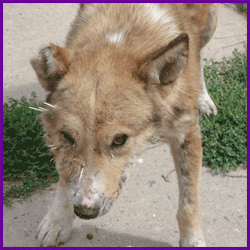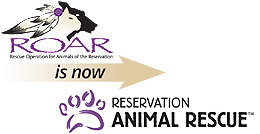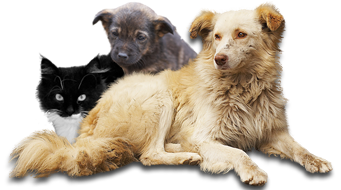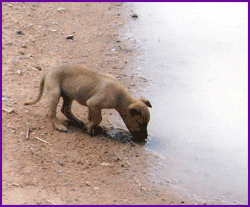|
The dog days of summer can be "ruff" on a four-legged, but winter presents many challenges for our furry friends as well — even more so on stray animals. In a recent discussion with a Program Partner who embraced a stray in her community, she shared the story of her recent visit to a veterinarian. Apparently, her dog got into a scrap with a porcupine. It was clear from her description who dominated the Porcupine/Dog altercation... Porky did. Porcupines are pretty slow movers, but their quills offer a good buffer zone to the many predators they come across. It’s hard to say how many quills the porcupine sacrificed to “Red’s” mouth, tongue and throat, but the pain of removing quills was pretty evident through his sedation-laced whimpers at the vet clinic.
 Unlike the stray in the photo, Red was one of the lucky ones. He had an owner with compassion for his pain and took him to the nearest veterinarian clinic... 50 miles away. After the quill removal and a near $200 bill, Red was ready to return home. Red was a former stray in this community before he found his new family. His owner shared that the community is basically a dumping ground for unwanted dogs. Being fairly isolated and sitting along the reservation border, the community has no stores, no gas station... no vet clinics. Red’s owner is hopeful that he doesn’t follow the footsteps of another dog that frequents this particular vet clinic for quill removal and learned his lesson from this one porcupine tussle.
Porcupines are not the only predators strays have to deal with. Temperatures are already dipping below freezing — and winter doesn't officially start until December 21st! A few of the enemies that strays combat each year include:
1) Cold weather — Hypothermia in dogs can lead to a variety of problems: loss of coordination, depressed respiratory systems and exhaustion. More severe problems can lead to collapse and paralysis. Frostbite is another weather related concern for strays in the winter. A dog’s feet can get cold very quickly and dog’s toes are one of the most common areas of frostbite.
2) Antifreeze — Vehicles rely on this liquid to keep the water in the radiator from freezing in cold weather and it is used frequently during the winter months. A leaky radiator can be deadly because the antifreeze contains a compound called ethylene glycol and it is extremely poisonous. If a dog or cat comes across a puddle of coolant, it is likely they will lap it up due to its sweet taste, but this is very deceiving and toxic when ingested.
3) Hunger — In a few reservation areas, strays get fed more during tourist season. They congregate at stores, hotels and restaurants hoping for something to eat. Once the colder months approach and tourist traffic goes down, homeless animals get hungry. This may very well translate into these animals getting more aggressive to find their next meal. Their victims can include livestock and other animals.
4) Cars — Finally, vehicles are one of most dangerous enemies of the rez dog. It is a common sight to see dogs on the side of the road that have been hit. The strays roam free on the land, but when areas are divided by highways, the four leggeds typically lose the battle with the more powerful four wheeled. Snowy and icy conditions make the roadways even more dangerous for crossing dogs — because the vehicles aren’t able to slow down in time to avoid hitting the animal.
Caring people like you have helped make it possible to aid reservation animals in need. Thank you!
| 










